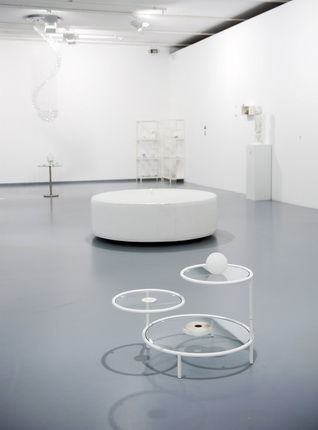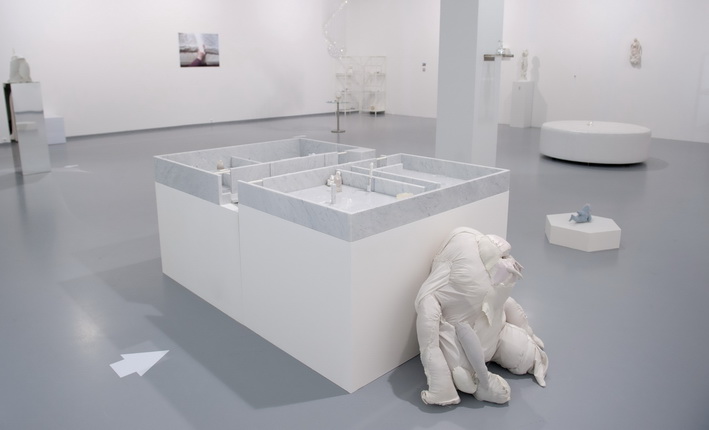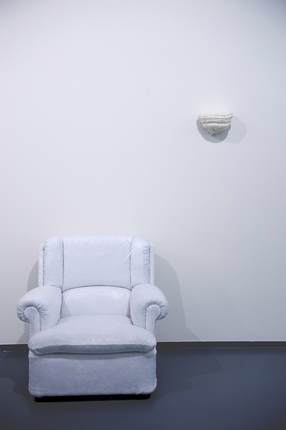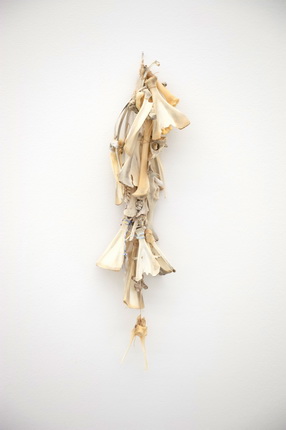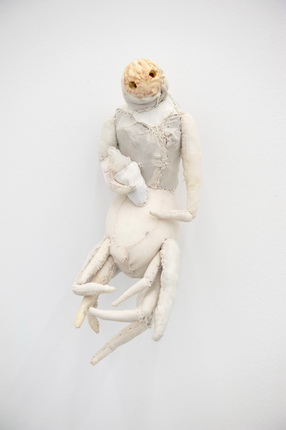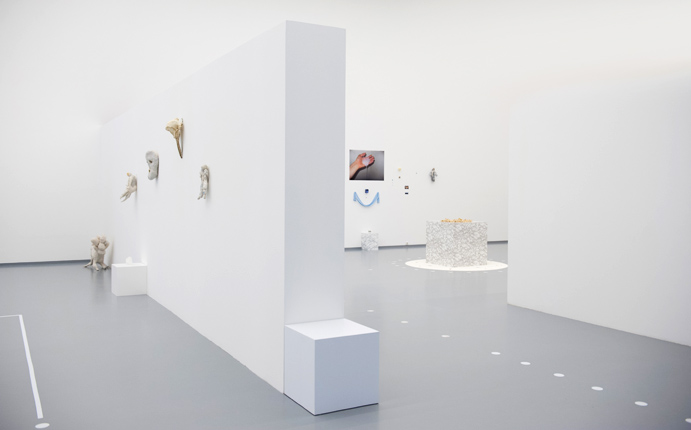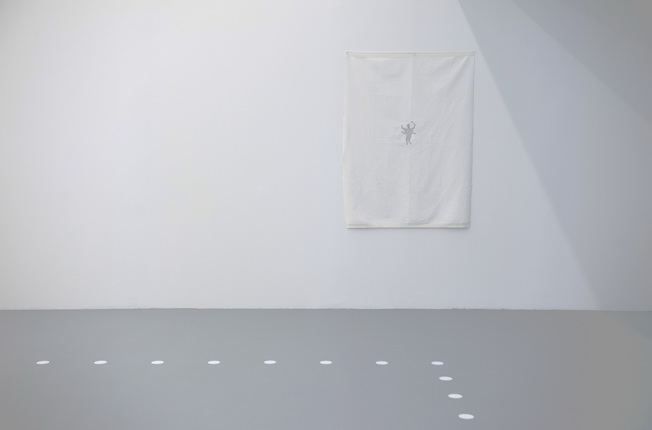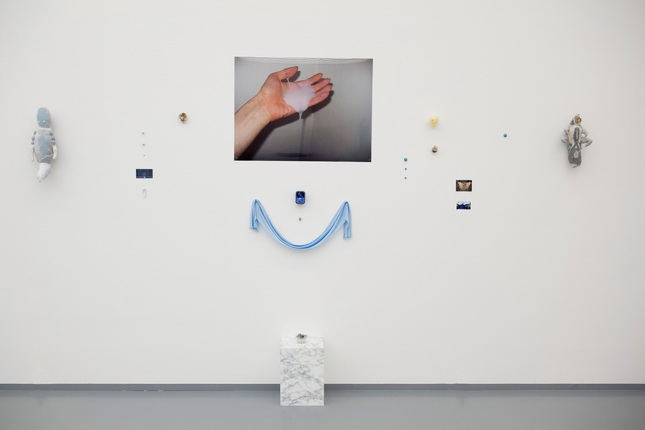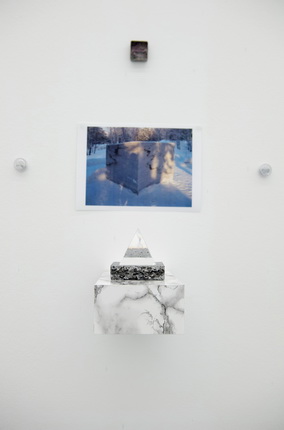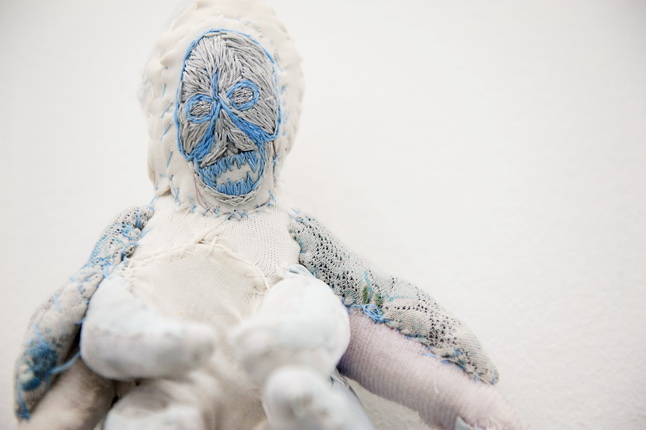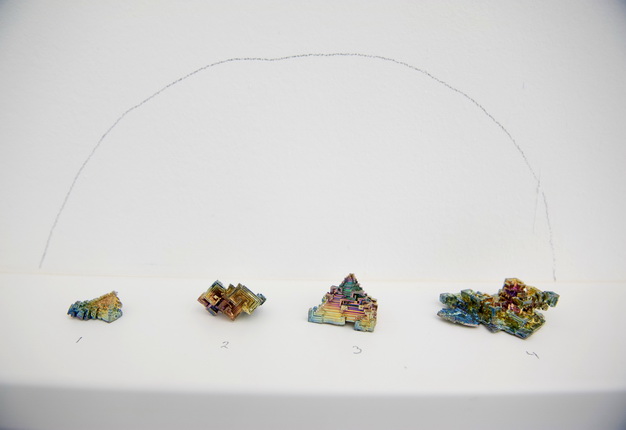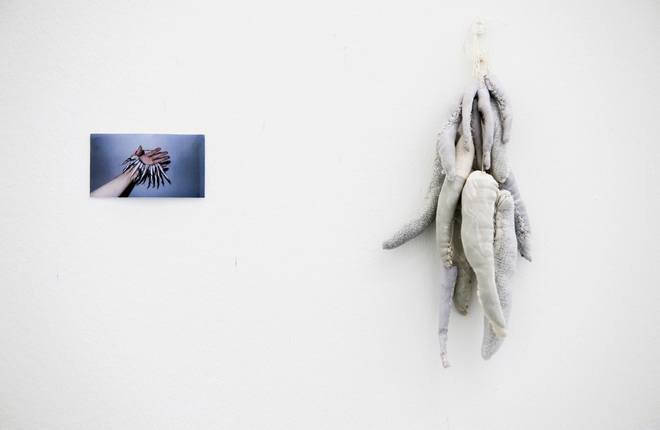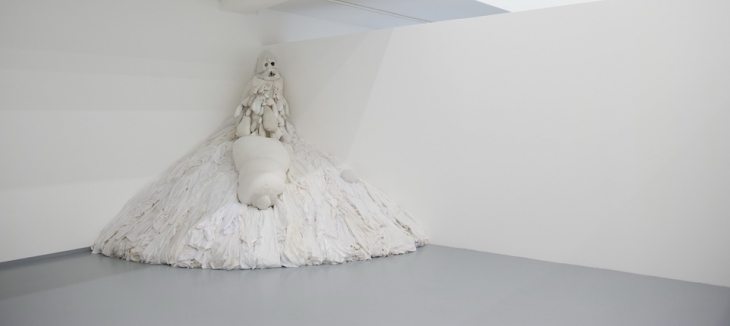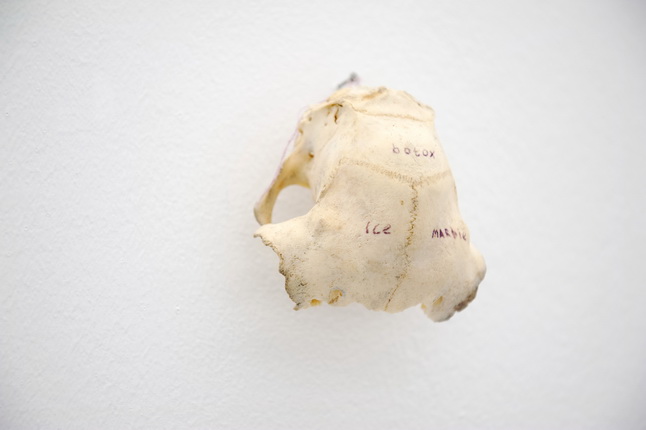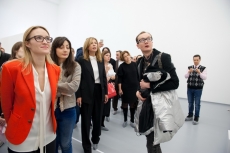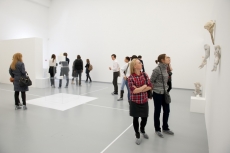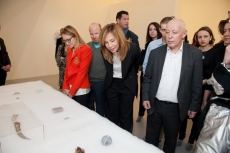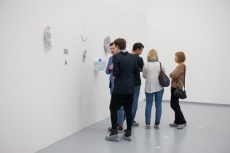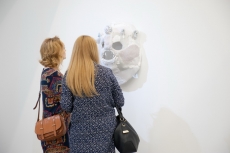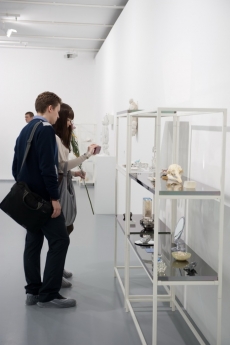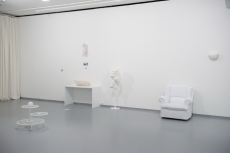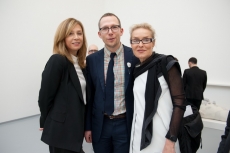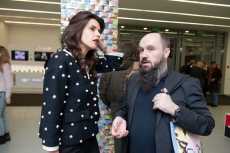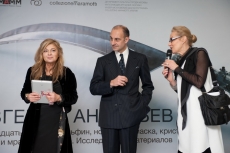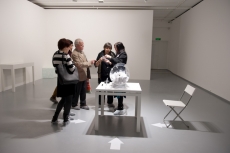Twelve, wood, dolphin, knife, bowl, mask, crystal, bones and marble – fusion. Exploring materials
Moscow, 15.02.2014—5.03.2014
exhibition is over
Share with friends
’My favourite form of perceiving information is as a maze, with paths that endlessly duplicate each other and sudden dead ends. Let us consider this exhibition to be such a maze, made of bones, wood, crystals, cloth, snakeskin, smoke, and meteoric iron. Quotes have been torn from classic Russian literature and placed on the walls to show the way, and dolphins with eyes like liquid marble reside in the dead ends. Sometimes, even I do not understand the mechanism by which this complex construction functions, or why precisely this tangled, unclear, glittering form is for me an ideal, maximally realistic reconstruction of the universe.
Evgeny Antufiev
For the press
MAMM in collaboration with the Collezione Maramotti presents ’Twelve, wood, dolphin, knife, bowl, mask, crystal, bones and marble — fusion. Exploring materials’, a project by Evgeny Antufiev created during a residential programme organised by the Collezione Maramotti and first exhibited in 2013 in Reggio Emilia (Italy).
Evgeny Antufiev is the only Russian artist of his generation to consistently demonstrate a unique sensitivity to archaism, a specific type of mythological consciousness, manifestations of which he finds in the modern world.
Antufiev returns to the physical world its long-lost sacral content, as if reinventing things, various objects, and the artist involves all the diversity of familiar materials and items in this micro-act of creation: clothing, crystals, minerals, insects, marble, animals, wood, beads, etc. Antufiev sews, embroiders, carves, saws, crushes and assembles these articles, and his actions are subject to the logic of shamanic ritual and mystery rather than artistic creation. At this moment true freedom is revealed to Antufiev, a space liberated from Euclidean logic, in which there arises a unity of the physical and symbolic substance of things.
In Antufiev’s hands any material shows the way to overcoming the concrete and unequivocal nature of form, and some degree of courage is required for the viewer to follow this new setup, the newly discovered rhythm. The viewer has to reject his habitual contemplation of art, now he must make literal, almost physical contact with numerous objects, situations and relations: the process of perceiving art is no longer delineated in terms of looking, examining; communication is increasingly complex, involving all the sense organs, obliging us to experience, to catch the rhythm and energies. He moves from dolphins to strange anthropomorphic creatures, comes up against a heap of rags, discovers hidden rooms and ’little secrets’, manoeuvres away from the deadly seriousness of ancient symbols towards ironic assemblies the artist has collected like ’cabinets of curiosities’, actually exhibited in the cases you might find in a sterile laboratory.
Antufiev’s method, paradoxically as it may seem, excludes the chance, the spontaneity of artistic action: his art (described precisely as a living process and not the result of a collection of artefacts) is reminiscent above all of the poetry of ’flamboyant modernism’, the kind of creative activity typical, for instance, of Paul Celan. Antufiev penetrates to the subcutaneous layer of the world and almost reaches the ’depths’ of truth and revelation, in order to dive back to the surface and show the world the ease of transformation. Like a dolphin turning somersaults over the surface of the water.
Born in Kyzyl, in the Tuva Republic (Russia) in 1986.
Lives and works in Tuva and Moscow.
He began his studies at the Institute of Contemporary Art in 2008.
In 2009, he won the Kandinsky Award for the «Young Artist. Project of the Year».
Solo exhibitions:
Material Research: Absorption, REGINA Gallery, Moscow, 2012
Shining (with Ivan Oyuon), Gallery White, Moscow, 2011
Bones, Gallery White, Moscow, 2010
Wings of Horror, Navicula Artist Gallery, St. Petersburg, 2010
Myths of My Childhood, Globus Gallery, Loft Project ETAGI, St. Petersburg, 2009
Objects of Protection, «Start» space at Winzavod Center for Contemporary Art, Moscow, 2008
Group exhibitions:
Ostalgia, New Museum, New York, 2011
Needle Work, Proun Gallery, Moscow, 2009
The Collezione Maramotti, born from the passion for art of Max Mara founder Achille Maramotti, comprises contemporary art spanning the years from 1945 to the present day. The collection is located in the historical headquarters of the Max Mara Company in Reggio Emilia, with permanent exhibits occupying two floors. Opened to visitors in September 2007, the collection numbers some 1000 items and is still growing and increasing the collection with new projects commissioned to international young and middle career artists. The Collezione Maramotti holds regular exhibitions and cooperates with Whitechapel Gallery, London for Max Mara Art Prize for Women: a prize for young female artists that lives and works in UK.


